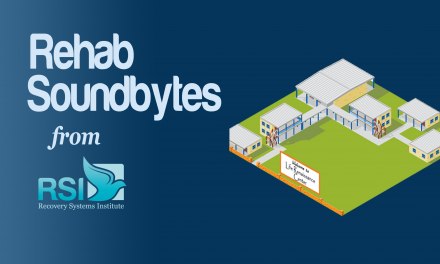For much of history, scientists were forced to regard the brain as a black box to which they had no key. Everyone could see the results of brain function, but not the actions of the working brain. That’s changed in the past thirty years, however. New research tools such as imaging have produced some surprising insights.
For instance, the long-held belief that the brain’s plasticity — its ability to change physiologically in response to changes in behavior or environment — ended with childhood. We now know better.
The brain changes throughout life. Research suggests that the relationship between ‘mind’ and ‘brain’ is not nearly as one-sided as once believed. The way we think can actually induce changes in the brain. That opens an ancient question: can human beings retrain our brains to function better?
This may not be a question to those who practice mental disciplines such as meditation, affirmations, prayer, etc., on a regular basis. The role of a divine power in allowing diligent practitioners to maintain calm in the face of uncertainty or threat, and respond positively to challenging or perilous circumstances, can’t be measured. But now we better understand the link between meditation and slowed heart rate, or reductions in anxiety due to calming exercises.
Take the use of positive affirmations like AA’s ‘Keep It Simple’ and ‘One Day At A Time’ and ‘Easy Does It”. These simple phrases aren’t a ‘treatment’ for alcoholism and don’t produce immediate relief from drug cravings, but they can certainly be used to help retrain a recovering brain and to interrupt the longstanding relationship between negative feelings and impulsive, destructive behavior.
For those of us struggling with disorders that link self-destructive behavior to negative moods and feelings, “scripting” offers more focused help. More formally known as “cognitive restructuring,” these tools are used in a variety of therapeutic approaches such as Cognitive Behavioral Therapy(TM), Rational Emotive Therapy(TM), and Neurolinguistic Programming(TM).
Most scripting approaches incorporate these steps:
- First, identifying destructive “inner voices” and the negative self-talk they produce
- Then, deconstructing the negative self-talk with rational analysis, and
- Finally, replacing the negative script with a more positive one.
It’s important to become sensitive to destructive inner dialog, in order to recognize it quickly and apply the script. Destructive inner dialogs can be very subtle. We may need to look for physical cues such as changes in sleep patterns, or the appearance of certain behaviors and interactions that signal the influence of a negative script.
Let’s look at “Sandy,” in her twenties, recovering and struggling with self-injury and bulimic episodes: After several sessions, Sandy and her therapist were able to identify some inner voices– authority figures who expressed disappointment and anger that Sandy wasn’t meeting their expectations. A little more work allowed Sandy to put words to the voice and even hear the words in tones of voice and turns of phrase that she associated with her Mom.
“How can you just sit here? Your father is in the hospital, dying, and I’m at the end of my rope! Can’t you even make yourself useful? Keep your little brother quiet, for godssakes, I can’t hear myself think. Without your father I don’t even know if we’ll be able to keep the house. The least you can do is try to help.”
Whether Sandy’s Mom ever actually said those words isn’t the point– those were the words she heard in her head, insisting she needed to be doing something, being something, that she wasn’t. They were a source of almost unbearable tension– tension that Sandy alleviated by cutting or burning herself.
But a funny thing happened when she finally identified the words of the negative script, and heard herself saying them aloud: “At first it was a sharp, horrible pain. I didn’t want to say them again, didn’t even want to hear them or think them. But then the pain eased, and I realized that putting the words to the feeling actually made the feeling less powerful.”
Sandy and her therapist discussed how, as an eleven year old, she had assumed responsibility for an adult’s well-being. And built a script that Sandy could use to effectively “talk back” to the harmful inner voice — interrupting the escalating cycle of tension, and replacing the destructive impulses with options such as going for a walk, preparing a healthy meal, or attending a meeting of a support group.
“That was the easy part,” Sandy admitted. “The hard part was learning to detect when the ‘bad voice’ was talking underneath. When I was feeling restless and stressed-out, and I began to have ‘white nights’ where I’d stay up and watch DVDs or hang out on the computer and think about a beer binge to help me sleep. I didn’t always associate that with the ‘bad voice.’”
Sandy’s experience illustrates one of the key insights that science is validating. Language– the words we choose for our self-talk– has a powerful influence on our brain function. Words can help us re-shape the cycle of feelings, impulses, and behaviors. This article from a University of Toronto researcher provides a more detailed explanation.














As this article points out, the inner Critic can destroy confidence and self-esteem. It’s the result of underlying shame in childhood and perpetuates it in adulthood. Shame is associated with codependency, eating disorders, depression, and aggression. Because self-criticism is so debilitating, I wrote “10 Steps to Self-Esteem: The Ultimate Guide to Stop Self-Criticism.” Self-love is the path to recovery and it can be learned.
Darlene Lancer, MFT
Author of “Codependency for Dummies”
and forthcoming “Conquering Codependency and Shame”